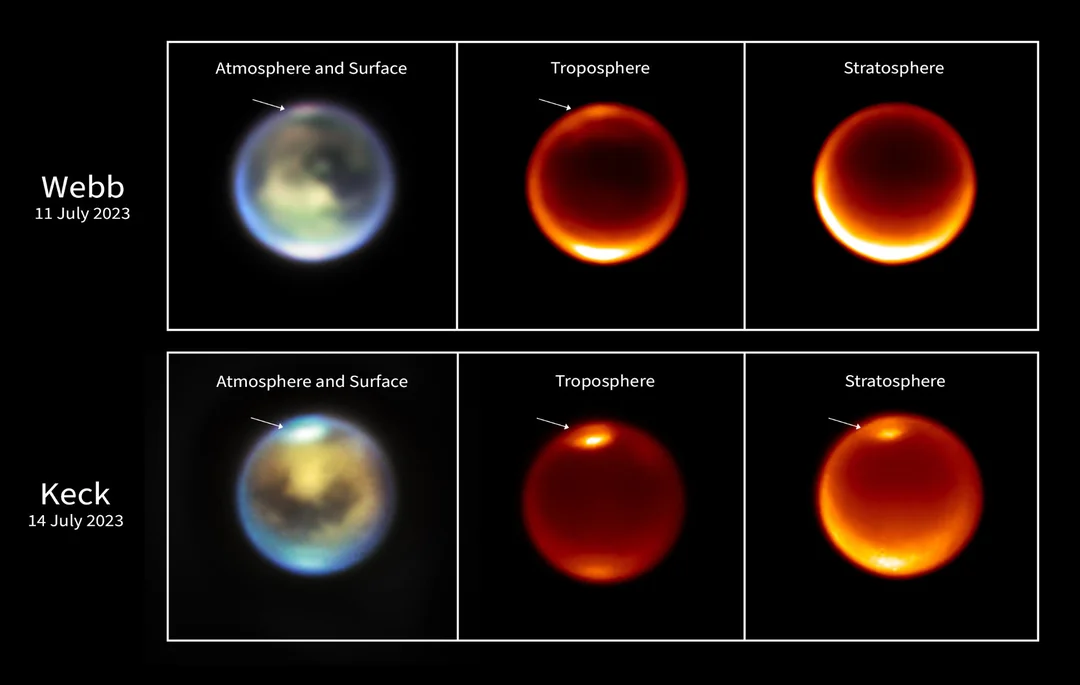
James Webb Telescope Unveils New Secrets of Saturn’s Moon Titan: Methane Rain and Chemical Cake
Saturn's moon, Titan, a celestial body long intriguing scientists with its Earth-like qualities, has surrendered more of its secrets thanks to powerful observations from the James Webb Space Telescope (JWST) and the W.M. Keck Observatory. These groundbreaking findings shed light on Titan's weather patterns, atmospheric chemistry, and potential for hosting life. What did the telescopes discover and why does it matter?
In a collaborative effort, scientists merged data from the Keck II telescope and the JWST, revealing, for the first time, cloud convection in Titan’s northern hemisphere – a region abundant with methane lakes and seas. This discovery, detailed in a recent Nature Astronomy publication, confirms that these bodies of liquid methane and ethane are likely replenished by methane rain from clouds in the same hemisphere.

Conor Nixon of NASA’s Goddard Space Flight Center, the lead author of the study, emphasized the significance of Titan’s weather: "Titan is the only other place in our Solar System that has weather like Earth, in the sense that it has clouds and rainfall onto a surface." The observations captured clouds rising to higher atmospheric altitudes, revealing evidence of convection never before seen in Titan's northern hemisphere during its summer season.
But the discoveries didn't stop there. The JWST also detected the methyl radical CH3, a carbon-containing molecule, in Titan’s atmosphere. This is a pivotal find, offering scientists a window into the hitherto mysterious chemical processes driving weather and atmospheric phenomena on the moon. As Stefanie Milam from Goddard aptly puts it, "For the first time we can see the chemical cake while it’s rising in the oven, instead of just the starting ingredients of flour and sugar, and then the final, iced cake." By identifying this intermediate molecule, scientists can begin to decode the journey from methane breakdown to the formation of more complex compounds like ethane.
This is crucial because methane is constantly being broken down by sunlight or energetic particles, with the resulting carbon compounds eventually settling on the moon's surface and hydrogen escaping into space. This depletion poses a long-term risk to Titan's rich atmosphere, potentially transforming it into a barren world of dust and dunes unless a source of replenishment exists. The identification of CH3 through the Webb telescope helps the scientists to measure and calculate this process.
The groundbreaking observations also set the stage for NASA's upcoming Dragonfly mission, a robotic rotorcraft slated to land on Titan in 2034. The Dragonfly Mission promises close-up studies of Titan, complementing the JWST's high-altitude perspective and maintaining continuity with the Cassini-Huygens Mission.
These new insights are sparking excitement about Titan's potential as a prebiotic environment. The presence of complex organic and carbon-containing chemistry intrigues astrobiologists, fueling the search for the building blocks of life beyond Earth.
The JWST's observations, combined with ongoing ground-based studies and the future Dragonfly mission, promise an unprecedented understanding of Titan. Will Dragonfly uncover a source replenishing methane on Titan? What other organic molecules will the rotorcraft discover in the Shangri-La dune fields? Share your thoughts and predictions in the comments below!